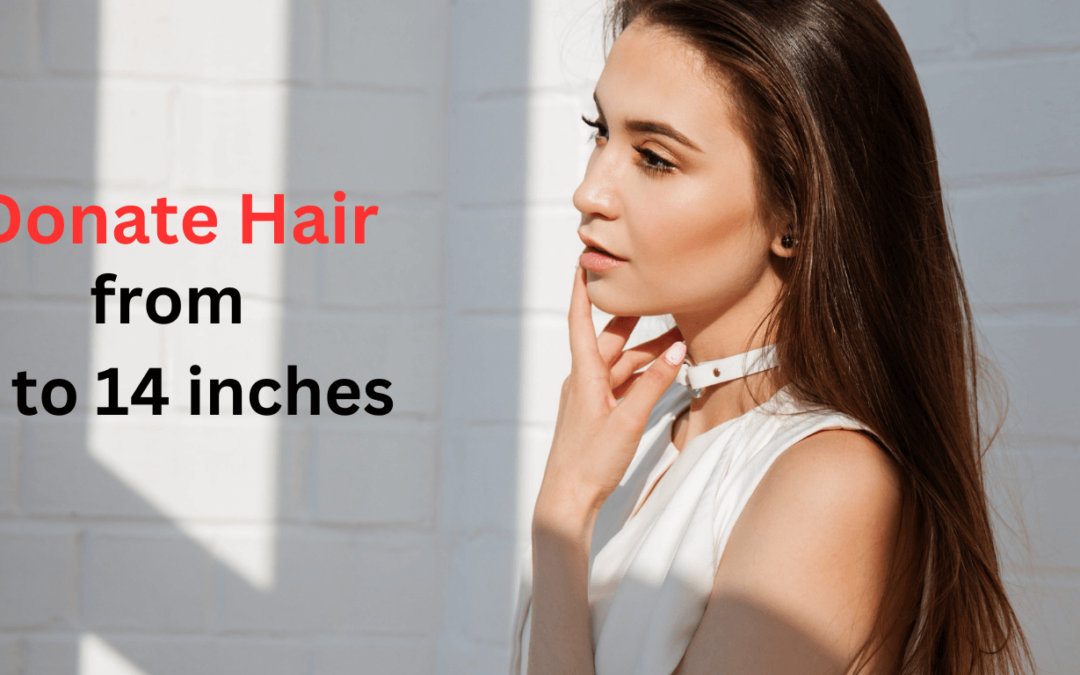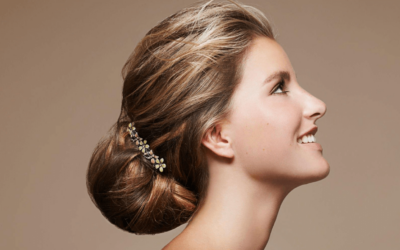Are you considering donating your hair to a worthy cause? Donating your hair is a wonderful way to contribute to those in need, whether they are undergoing medical treatments or experiencing hair loss due to various reasons.
But you might be wondering, “How long does my hair need to be to donate?” In this comprehensive guide, we will explore the ideal hair donation length, the donation process, and the impact of your generous act.
So let’s dive in and discover how you can make a difference with your hair!
Understanding Hair Donation
Hair donation involves voluntarily giving a significant length of your hair to organizations that make wigs for individuals who have lost their hair due to medical conditions, such as cancer, alopecia, or trichotillomania.
These wigs can boost the self-esteem and confidence of those going through challenging times, helping them feel more like themselves again.
Hair Donation Length Requirements
The hair donation length requirements may vary depending on the organization you choose to donate to. However, most reputable organizations typically require a minimum hair length of 8 to 12 inches for donation.
This length allows the hair to be properly used in the wig-making process, ensuring that the wig recipients receive high-quality, natural-looking wigs.
Why Hair Donation Length Matters
Hair donation length is crucial to ensure that the donated hair can be transformed into usable wigs. Here’s why the length requirement matters:
Wig Construction
Wig manufacturers require a minimum length to create wigs that look and feel natural. With longer hair, they have more flexibility in crafting different wig styles and providing coverage for the wig recipients.
Hair Blending
To create wigs that resemble real hair, the donated hair needs to be long enough to blend with other hair strands. This blending process helps in achieving a seamless and natural appearance for the wig.
Styling Options
Longer hair allows wig recipients to have more styling options. Whether they want to curl, straighten, or tie the wig into a ponytail, the added length provides versatility and a sense of normalcy.
Finding a Reputable Hair Donation Organization
When donating your hair, it’s important to choose a reputable organization that ensures your donation goes to those who truly need it.
Here are a few well-known organizations you can consider:
Locks of Love: A nonprofit organization that provides hairpieces to children with medical hair loss.
Pantene Beautiful Lengths: A partnership between Pantene and the American Cancer Society, providing wigs to women battling cancer.
Wigs for Kids: An organization that creates custom-fitted wigs for children experiencing hair loss.
Before donating, make sure to visit their websites, familiarize yourself with their guidelines, and verify their donation process.
Preparing Your Hair for Donation
To ensure your donated hair is in optimal condition, follow these steps for preparation:
Choose a Clean and Dry Hair: Wash and thoroughly dry your hair before cutting it for donation. Clean hair is easier to handle and prevents any potential issues during the donation process.
Avoid Styling Products: Refrain from using styling products such as gels, hairsprays, or serums before cutting your hair. These products can interfere with the wig-making process.
Secure the Hair: Divide your hair into multiple sections and secure them with hair ties or clips. This helps to ensure an even and clean cut.
The Hair Donation Process
Once you have prepared your hair, it’s time to proceed with the hair donation process:
Find a Professional Hair Stylist: Schedule an appointment with a professional hair stylist who is experienced in hair donations. They will ensure a proper cut according to the donation guidelines.
Discuss Length and Style: Communicate with your stylist about the desired hair donation length and the style you prefer after the donation. They will guide you and ensure the cut meets the requirements.
Double Check: Before the cutting begins, double-check that the stylist is aware of your intention to donate your hair. This ensures they handle your hair appropriately.
Tips for a Successful Hair Donation
To make your hair donation process smooth and successful, consider the following tips:
Research Donation Organizations
Take the time to research different hair donation organizations. Read their guidelines, understand their mission, and ensure their values align with yours.
Choosing the right organization will give you peace of mind that your donation will be used effectively.
Measure the Length
Measure your hair before visiting the stylist to ensure it meets the minimum length requirement. This helps avoid disappointment if your hair is not long enough for donation.
Share Your Story
Consider sharing your hair donation journey on social media or through a blog post. By raising awareness about the importance of hair donation, you may inspire others to join the cause and make a difference as well.
Practice Self-Care
Donating your hair is an act of kindness and generosity. After the donation, take some time to pamper yourself and embrace your new hairstyle.
Treat yourself to a relaxing spa day or try a new haircut that makes you feel confident and beautiful.
Frequently Asked Questions (FAQs)
Q1: Can I donate colored or chemically treated hair?
A1: Yes, in most cases, you can donate colored or chemically treated hair. However, some organizations may have specific guidelines regarding acceptable hair treatments.
It’s best to check with the organization you plan to donate to for their specific requirements.
Q2: Can I donate gray or silver hair?
A2: Yes, some organizations accept gray or silver hair for donation. These unique hair colors can be used to create beautiful wigs for individuals who have experienced hair loss due to aging or medical conditions.
Check with the organization of your choice to confirm their acceptance of gray hair donations.
Q3: Can I donate my hair if it is not long enough?
A3: If your hair is not long enough to meet the minimum length requirement, consider alternative ways to support hair donation organizations. You can participate in fundraising events, volunteer your time, or spread awareness about the cause.
Conclusion
Donating your hair is a selfless act that can make a significant impact on the lives of individuals facing hair loss.
By understanding the hair donation length requirements and following the proper steps, you can contribute to creating wigs that provide comfort, confidence, and a sense of normalcy to those in need.
Remember to choose a reputable organization, prepare your hair diligently, and embrace the journey of making a positive difference in someone’s life.
















